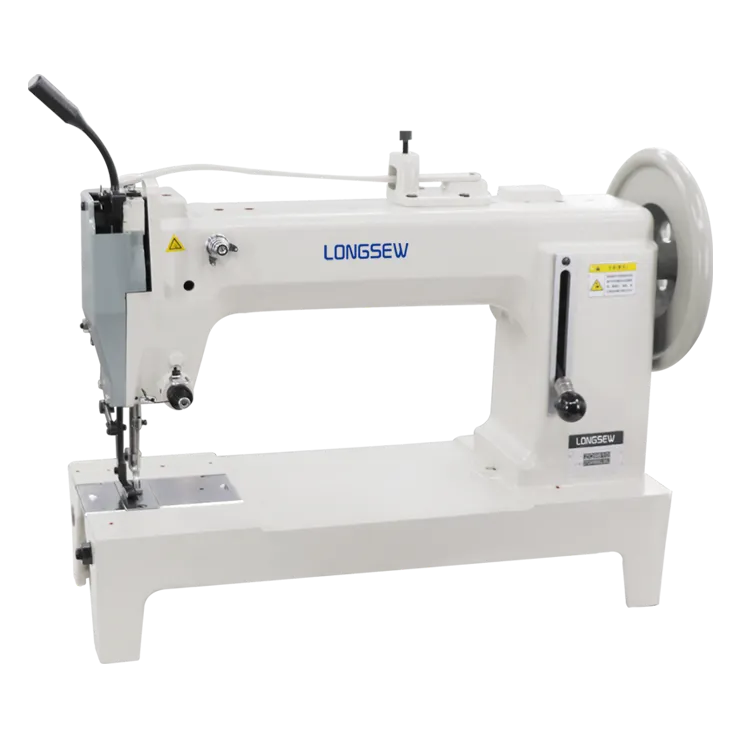Hand Stitching Machine for PP Bags with Efficient and Durable Performance
The Versatility and Innovation of the PP Bag Hand Stitching Machine
In the realm of packaging and textile industries, the significance of durability and efficiency cannot be overstated. One of the key tools that encapsulates these qualities is the PP bag hand stitching machine. This remarkable device plays a crucial role in the production of polypropylene bags, which are widely used for various applications, including agricultural, industrial, and retail.
What is a PP Bag Hand Stitching Machine?
A PP (Polypropylene) bag hand stitching machine is a specialized textile machine designed to stitch polypropylene bags manually. Unlike fully automated sewing machines, hand stitching machines are portable and provide the flexibility of working on-site. They are designed for stitching and sealing the open ends of bags that are typically used to store grains, flour, feed, chemicals, and many other products.
These machines utilize sturdy threads that can endure rough handling, ensuring that the contents of the bags remain secure. The stitching process not only reinforces the bag's structure but also enhances its aesthetic appeal. The versatility of the machine allows it to work with various bag sizes and thicknesses, catering to the diverse needs of industries.
Features and Benefits
One of the most significant features of the PP bag hand stitching machine is its portability. Users can easily carry the machine to different locations, making it ideal for businesses that may require stitching bags at various sites, be it in a warehouse, factory, or field. This portability reduces the need for transporting raw materials to a central location, thereby improving overall efficiency.
Another advantage of using a PP bag hand stitching machine is its economical operation. For businesses, especially small enterprises, investing in a machine that does not require substantial setup costs is crucial. These machines consume less power as well, making them cost-effective in the long run. The ease of operation allows minimally trained personnel to use the machine efficiently, reducing labor costs.
pp bag hand stitching machine

The durability of the stitching produced by these machines is another pivotal advantage. The aligned and tight stitch ensures a secure closure, which is essential for maintaining the integrity of the contents within the bag. Whether it’s agricultural products or industrial materials, the reliability of the stitching can profoundly impact product safety and quality.
Applications in Various Industries
The applications of PP bag hand stitching machines stretch across various sectors. In the agricultural sector, these machines are indispensable for creating bags that store fertilizers, seeds, and grains. Given the nature of these products, the robust stitching capability of the machine ensures that no spillage occurs, which could lead to financial loss.
In the chemical industry, safety is paramount. The bags used for storing chemicals need reliable seals to prevent any leakage, which could be hazardous. The hand stitching machine, with its ability to create strong, reliable stitches, meets these stringent safety standards. Similarly, in the food packaging sector, it is essential to maintain hygiene while ensuring secure packaging, which these machines facilitate.
Retailers also benefit from the capabilities of the PP bag stitching machine. With the rise of environmental consciousness, many retailers prefer using reusable PP bags for products. The hand stitching machine allows them to offer customized sizes and designs, enhancing brand visibility while adhering to sustainable practices.
Conclusion
The PP bag hand stitching machine is more than just a tool; it is a linchpin in modern manufacturing and packaging. Its combination of portability, cost-effectiveness, and sturdy performance makes it a preferred choice for many industries. As businesses continue to evolve and adapt to changing market dynamics, the relevance of this innovative machine is set to grow. Investing in such machines signifies a commitment to quality, efficiency, and sustainability—a strategy that is vital for success in today’s competitive landscape.
-
Industrial Cylinder Arm Sewing Machine: Revolutionizing Heavy-Duty SewingNewsJul.28,2025
-
Cylinder Arm Sewing Machine: Perfect for Special Sewing ApplicationsNewsJul.28,2025
-
Cylinder Bed Sewing Machine: Essential for Sewing Complex MaterialsNewsJul.28,2025
-
Heavy Duty Sewing Machine: The Essential Tool for Industrial ApplicationsNewsJul.28,2025
-
Computerized Pattern Sewing Machine: Revolutionizing Precision StitchingNewsJul.28,2025
-
Heavy Duty Industrial Sewing Machine: Power Meets PrecisionNewsJul.28,2025
-
Leather Sewing Machine: The Industrial Standard for Tough MaterialsNewsJul.18,2025





























